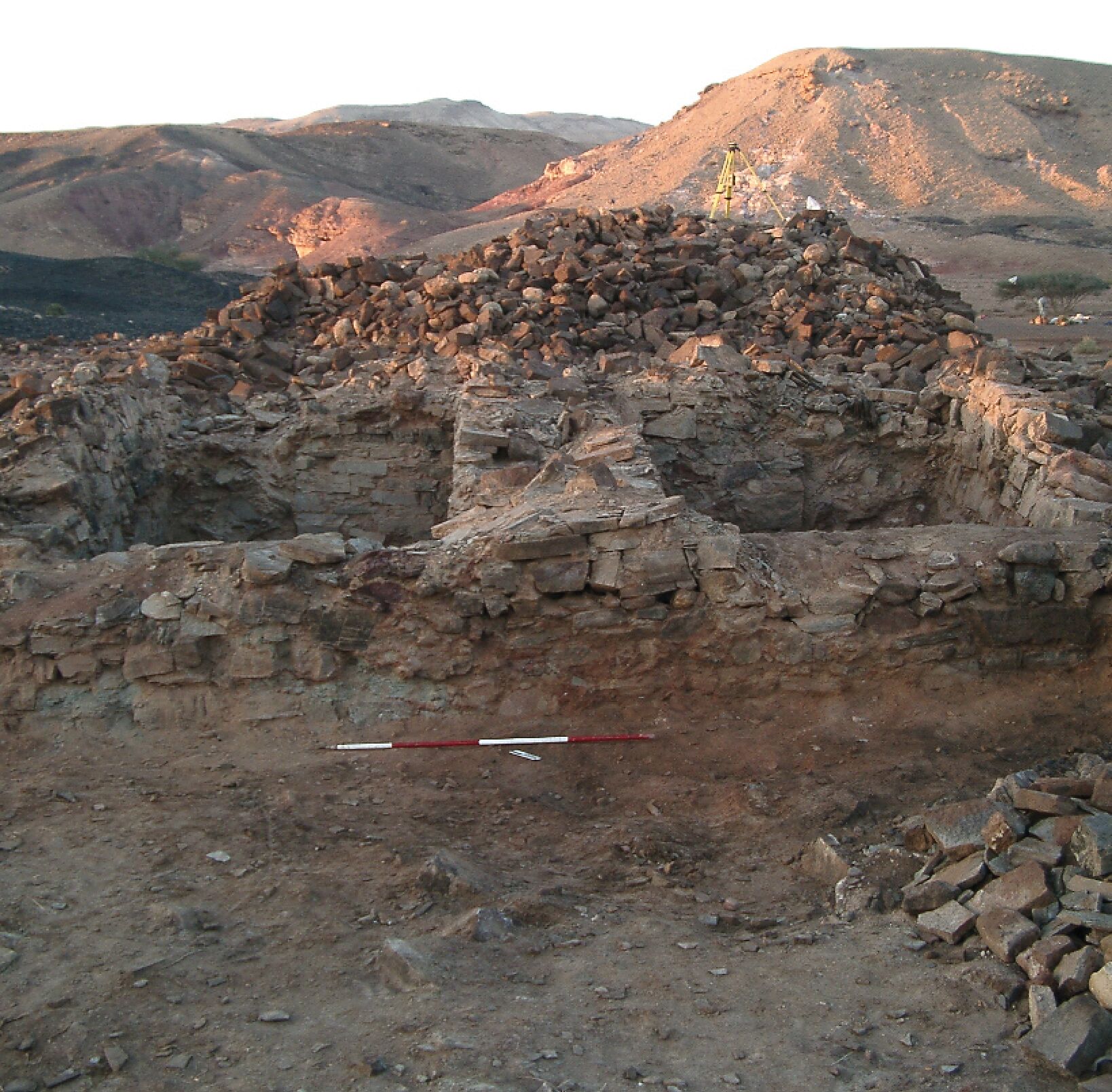Given the fragmentary nature of the Ophel gatehouse, the conclusion that it was a gate stirred some controversy. One particular disagreement was regarding the nature of the chambers. The Ophel gatehouse exhibited “closed” chambers that wrapped around four sides (with a narrow opening), rather than the more “open” three-sided chambers of Hazor, Megiddo and Gezer. Jerusalem’s “closed” chambers had no known archaeological gatehouse parallel. “We kept [Prof. Nahman] Avigad’s important critique in mind for many years,” wrote Dr. Mazar, “as it was the strongest argument that we would receive against our identification …. Though no city gate is completely identical to another, the fact that this was the sole known example whose chambers were intentionally closed off was puzzling” (Discovering the Solomonic Wall in Jerusalem).
In 2002, a discovery in Jordan shed light on the issue. A four-chambered gatehouse, discovered in Khirbet en-Nahas, featured exactly the same “closed”-style chambers. Not only that, this fortress’s use (as a copper production site) spanned the 10th and ninth centuries b.c.e., as revealed by numerous carbon-14 samples. As Mazar pointed out, this discovery “led the site’s excavators, Prof. Tom Levy and Mohammad Najjar, to raise the possibility that it may have been kings David and Solomon who controlled these mines, since, as noted in 1 Chronicles 18:13, they had also ruled over all of Edom where the site was located. This discovery solidified our assertion that Building C was indeed a gatehouse, with an atypical, but still known, construction plan” (ibid).

